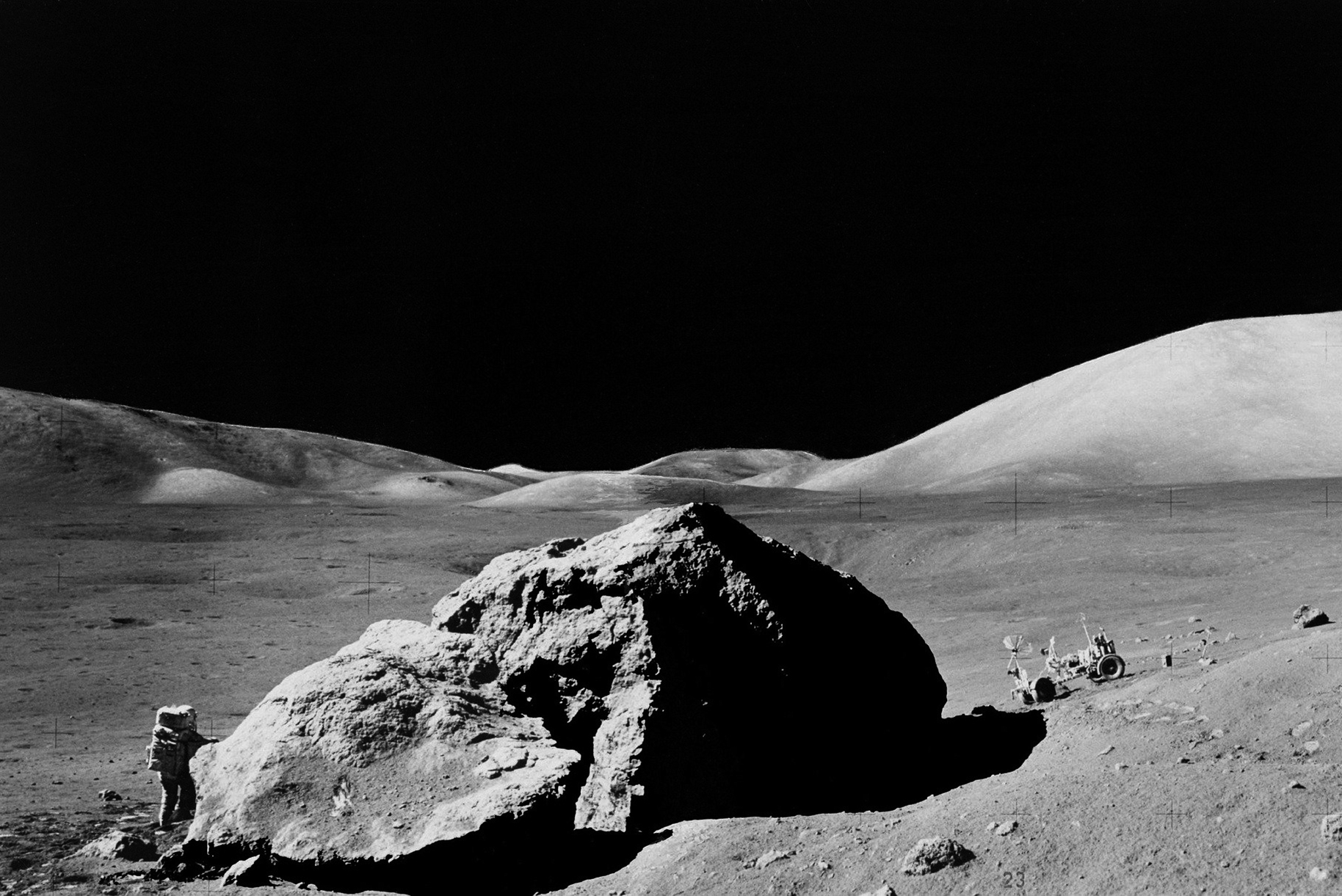This article was originally published in September 2020.
Commercial space enthusiasts, we have lift-off! On 10 September, NASA announced that it is soliciting proposals for private entities to collect lunar rocks and soil. Basically, NASA is offering to buy these materials from the corporations that gather them. This project has enormous implications for the future of commercial space activities.
“Today, we’re taking a critical step forward by releasing a solicitation for commercial companies to provide proposals for the collection of space resources,” announced NASA administrator Jim Bridenstine. One of his goals is to create “a stable and predictable investment environment for commercial space innovators and entrepreneurs”.
Furthermore, he clarified that NASA intends to take “an ‘in-place’ transfer of ownership”. Translation: whoever harvests the moon materials needn’t bring them back to Earth. This initiative helps realise Congressional legislation to protect US citizens’ property rights to celestial resources, and gives teeth to a recent executive order promoting the commercial development of space.
NASA is creating financial incentives for private companies to market lunar resources. This could be a first step to developing lunar mining capabilities. The biggest benefit of the programme, though, is precedent. It puts the US government’s imprimatur on space commerce. Given the ambiguities in public international space law, this precedent has the potential to steer space policy and commerce in a pro-market direction.
The position of the US government is clear: commercial activities in space are neither exploitative nor illegal
The foundational document of international space law is the 1967 Outer Space Treaty (OST). Drafted at the height of the Cold War, its chief function was to prevent a celestial arms race between the United States and the Soviet Union. That’s why it didn’t include any specific provisions for outer space property rights. Article II of the treaty forbids “national appropriation by claim of sovereignty, by means of use or occupation, or by any other means”. This calls into question the permissibility of private property rights. And Article VI states “activities of non-governmental entities in outer space, including the moon and other celestial bodies, shall require authorisation and continuing supervision” by their governments. This suggests that commercial actors must be micromanaged by their governments.
Subsequent treaties tried to clarify the OST’s purposes. For example, the Moon Agreement of 1979 clearly frowns on property rights to celestial resources: It forbids making the moon or any of its resources the “property of any State, international intergovernmental or non-governmental organization, national organization or non-governmental entity or of any natural person”. Fortunately, none of the major spacefaring nations ratified the treaty. Nevertheless, a significant portion of the international community supports it.
With NASA’s announcement, the US government decisively rejected this anti-commercial mindset. The US government is not annexing lunar real estate, meaning it continues to affirm OST Article II. And as for Article VI, as space lawyer Laura Montgomery correctly notes, it is not self-executing. It isn’t “enforceable federal law” without Congress passing “domestic implementing legislation.” In fact, Congress passed such legislation: the previously mentioned law to recognise and protect outer space property rights. It’s clear that Congress is comfortable with markets in space. Finally, because the US government never signed the Moon Agreement, there’s no subterfuge.
The position of the US government is clear: commercial activities in space are neither exploitative nor illegal. Given the vagueness of international space law on property rights, the precedents created by national space law will have a decisive role in shaping the future space environment. Hence, NASA’s actions can support a pro-business turn not just for the US, but also for the international community as a whole.
In ancient times, mankind extended the division of labour across tribes, turning enemies into friends. Later came trade across national boundaries, with similar largely peaceful effects. Now, humans are prepared to extend it still further: into the final frontier. Doux commerce is coming to the stars. NASA just made a “giant leap for mankind”. Everyone who cares about human wealth and welfare should heartily thank them.
Originally published by the American Institute for Economic Research.








